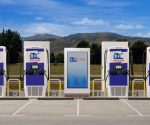Texans with disabilities left vulnerable after deep freeze
[ad_1]
Disaster response plans often fail to include people with disabilities, and the deadly deep freeze that swept across Texas and much of the mainland US last week was no exception.
“A lot of people in our community, they’re like, ‘I’m so damn tired that I have to be resilient. This isn’t our fault,’” says Tomás Aguilar, disaster recovery coordinator for the Living Hope Wheelchair Association in Houston, a group that provides services to immigrants with disabilities. “No, we don’t need a cheerleader. We need water.”
The winter storms that froze up power and water systems last week left a humanitarian disaster in its wake. First, people were left in the brutal cold without power or heat. Then came the shortage of food supplies and clean drinking water. As has happened before, the crises hit people with disabilities and chronic illnesses especially hard.
In one harrowing example, more than 100 residents of an Austin retirement community went two days without power and little food after its generator failed on February 15th. Staff at the high-rise facility for low-income people who are older or disabled ran up and down 16 flights of stairs to check in on residents and ration out food, the Texas Tribune reported. Losing power can be especially isolating and dangerous for people who use electric wheelchairs or who rely on electronic medical devices like feeding tube pumps. When emergency responders arrived on February 17th, they had to carry residents out who wanted to be evacuated.
As Texans’ food and water dwindled across the state because of storm-related disruptions, Aguilar says people who use wheelchairs had an even harder time getting supplies than people without disabilities. People with spinal cord injuries can have a more difficult time regulating their body temperature, making it difficult for them to brave the cold to line up at grocery stores or food banks. People who rely on paratransit services to get around can have a harder time lining up for supplies, too.
“Are you going to get in line with the hundreds of cars in line already with that paratransit service? They’re not going to do that,” Aguilar says. His group has been filling five-gallon jugs with water from the organization’s sink to bring to people without water.
These kinds of struggles aren’t new. During Hurricane Harvey in 2017, people with disabilities were left waiting in floodwaters for emergency responders who could accommodate their wheelchairs. One photo of people sitting in waist-deep water in an assisted living facility in Dickinson, Texas, went viral after Harvey.
These problems are also not exclusive to Texas. Nearly a decade ago, after Hurricane Sandy, some New Yorkers with disabilities were left stranded in their homes. One woman spent six days in her apartment without power, heat, or running water. She spent much of that time in bed after her electric wheelchair ran out of juice. A bus actually arrived to evacuate people at her public housing building at one point, but she couldn’t get to it — and even if she had, it wasn’t equipped to accommodate a wheelchair. After surviving the storm, she became a staunch advocate for more inclusive disaster response programs. But five years later, her building still hadn’t installed one of the simple fixes she pushed for: an evacuation chair that allows people to get down stairs even when the power is out.
It is unacceptable that so many years later, similar stories keep playing out. The blackout could have been prevented by investing in making the grid — not people — more resilient. Similarly, the struggles that people with disabilities faced during the crisis could also have been avoided by some simple changes to planning and infrastructure. Back-up generators and evacuation chairs could be installed in buildings where people with disabilities live. Emergency shelters could make sure to incorporate accessible bathrooms into their design and provide access to medical treatments like dialysis. And emergency response vehicles should be made more accessible so that people can get on them with their wheelchairs or other mobility aids.
All it takes to find those solutions is more room at decision-making tables for people with disabilities. Plenty of groups similar to Aguilar’s are pushing for change. There’s the Partnership for Inclusive Disaster Strategies, which has a disaster hotline. There are also guidelines from the Department of Justice on how to ensure emergency preparedness and response programs comply with the Americans with Disabilities Act.
“Vulnerable communities, the elderly, folks with disabilities — when everyone gets hit, they always get hit harder,” Aguilar says. “But it’s totally preventable.”
[ad_2]
Source link










